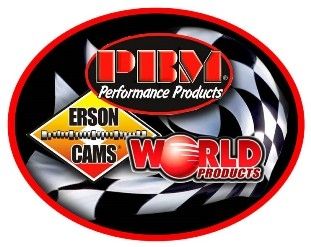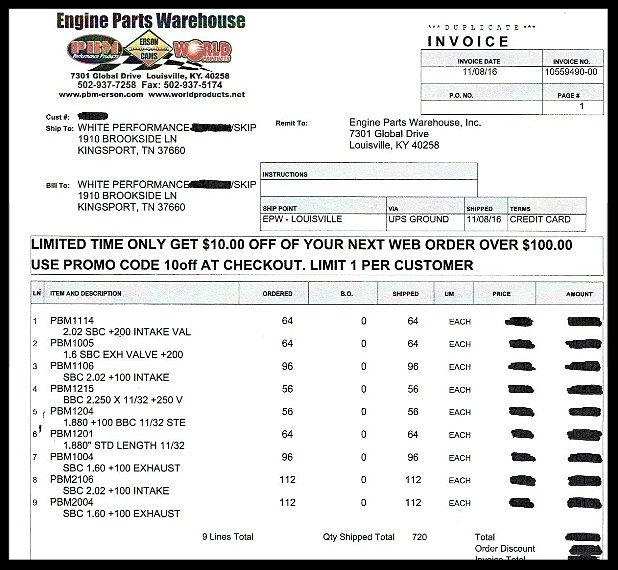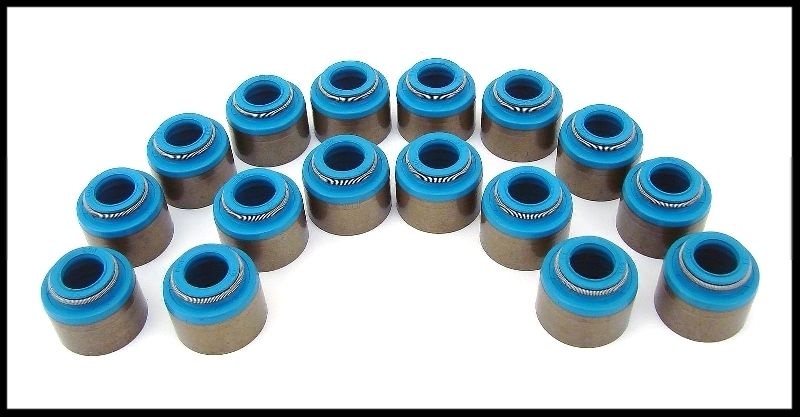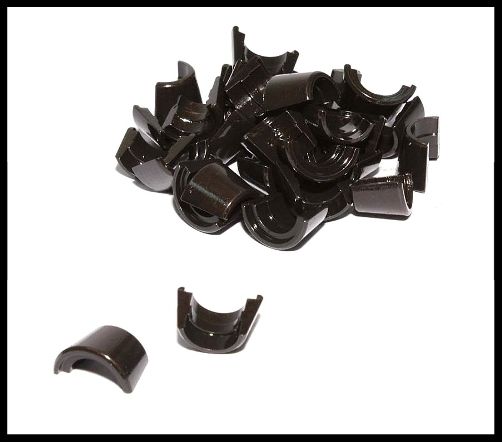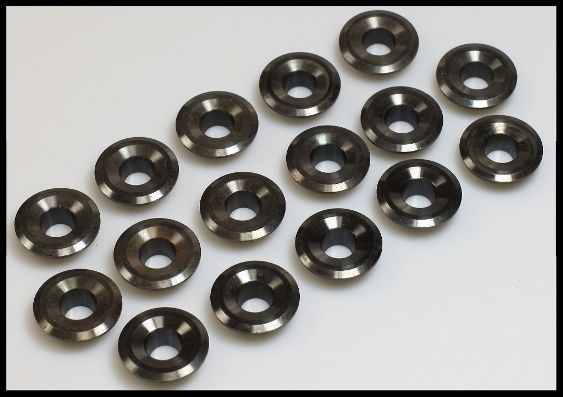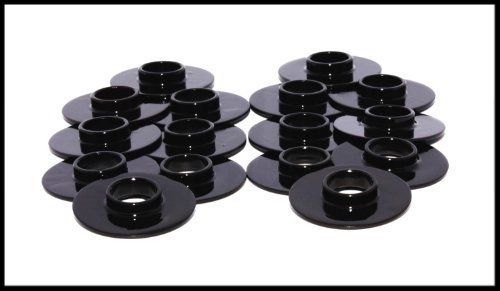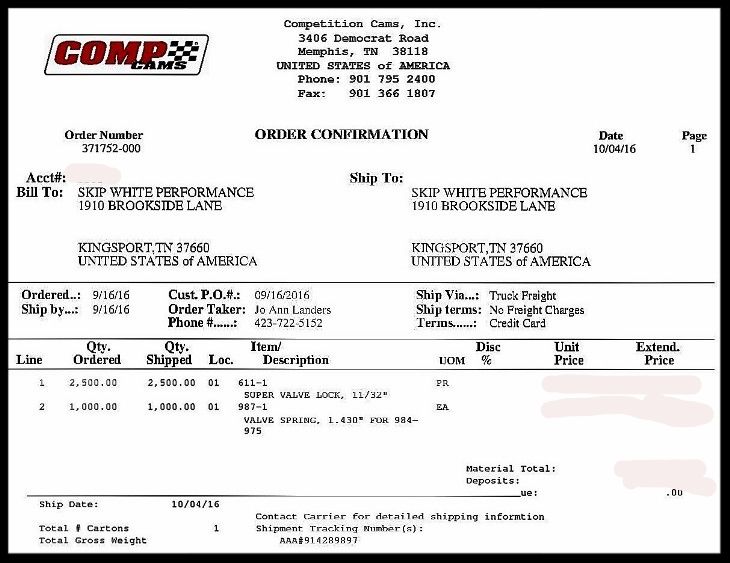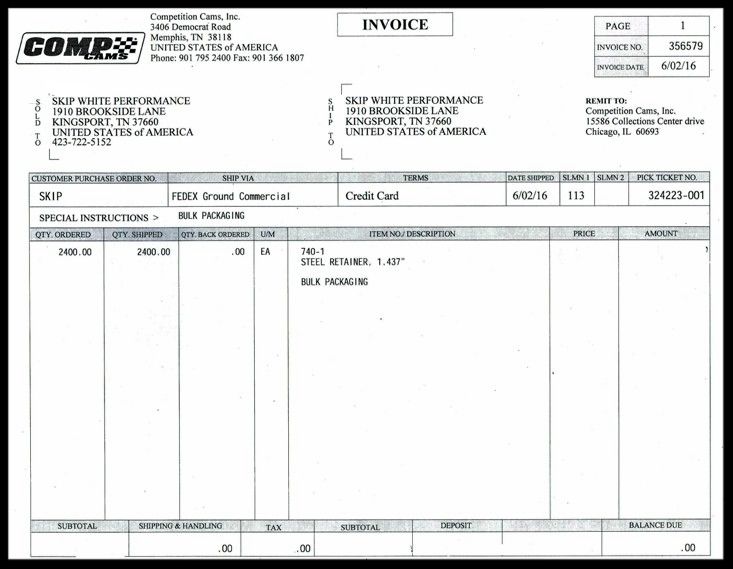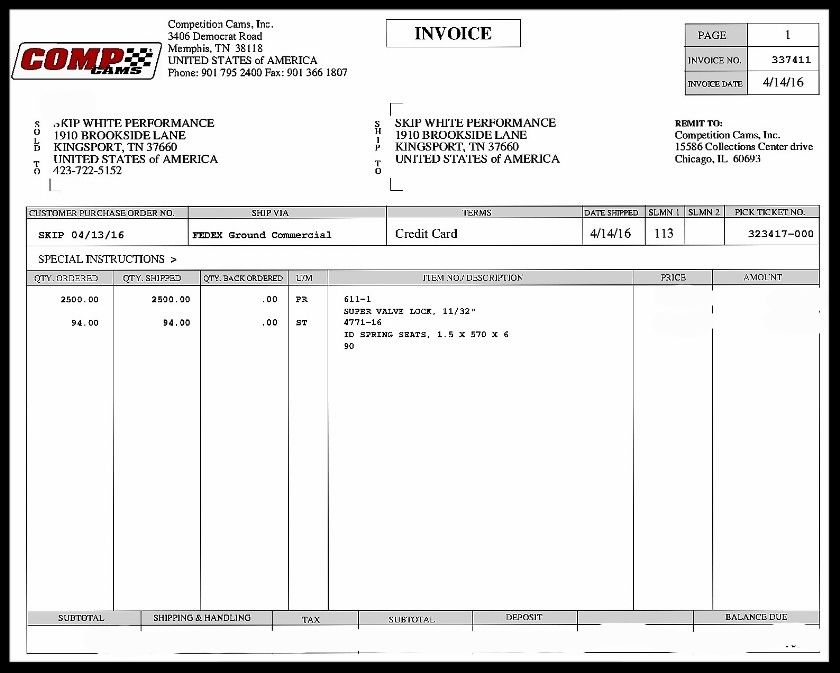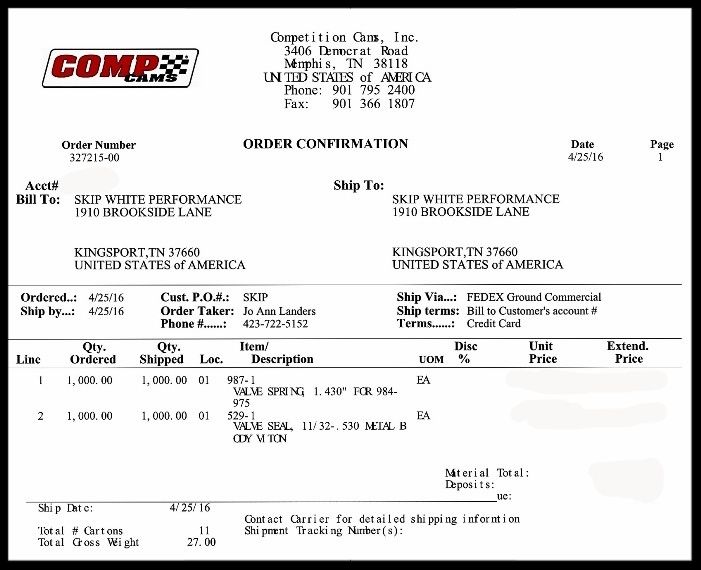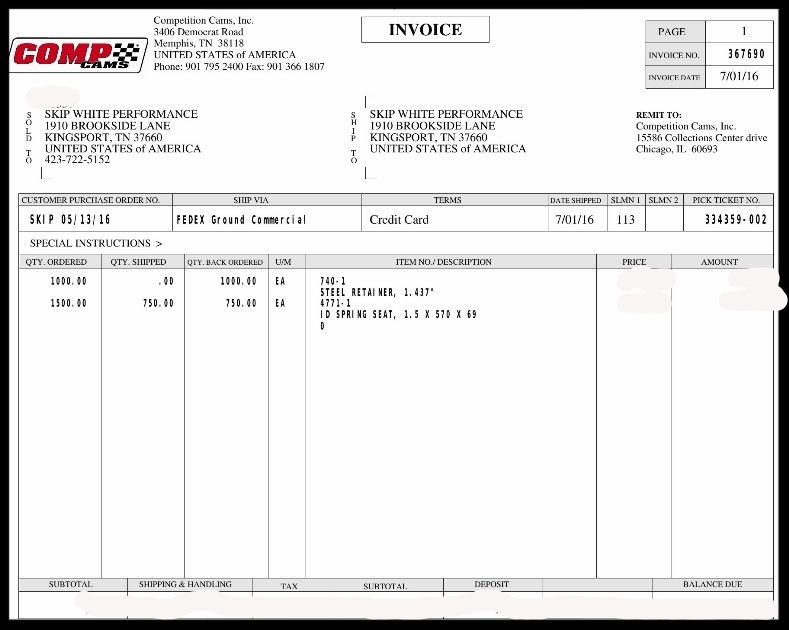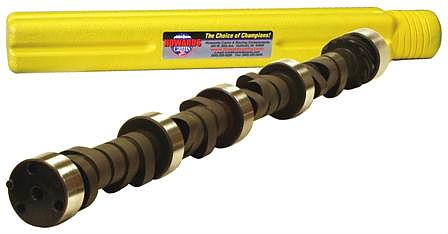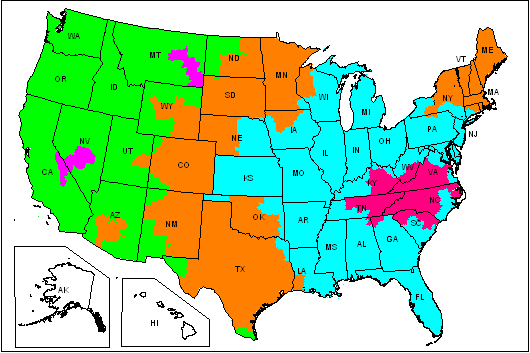|
PROMAXX 185 HEADS FOR SBC CHEVY ENGINES.
64cc COMBUSTION CHAMBERS, 185cc RUNNERS, STRAIGHT PLUG. SETUP FOR HYDRAULIC ROLLER CAMS.
This sale is for a pair of heads (2 heads).
Incredible flow numbers, outstanding quality.
The build quality exceeds all low cost aluminum heads on the market.
The hardware setup on these heads is for use with hydraulic roller camshafts up to .600 lift. See our other listings for hardware setups to accommodate hyd. flat tappet cams and solid roller cams.
These heads are highly recommended for use on sbc 350, 383, and 400/406 engines. They are the perfect runner size for mild to Pro-street buildups.
The ProMaxx heads used on a 350 engine build will produce up to approx. 450 hp. on pump gas when combined with the proper cam, intake, rocker ratio, compression ratio, and carb. When used on a 383 stroker engine, the horsepower and torque numbers will increase dramatically. We have achieved 570 hp in our Stage 2.2 383 Super Stroker engine, with cam choice 1 and a single plane intake with 1.6 rockers, using an 850 cfm carb, setup up for street use, and running premium pump gas.
The hardware setup on these heads is for use with hydraulic roller camshafts up to .600 lift. See our other listings for hardware setups to accommodate hyd. flat tappet cams and solid roller cams.
If you're running a cam that's in the 550 lift or less, then the 185cc runner size is perfect. Cams that are slightly larger would still be a suitable match for these heads. When you get into the 580-600 lift range, the 200cc size heads would be more in line to use.
We have complete top end hardware kits available for the ProMaxx heads in our other listings. The kit has the correct head and intake gaskets, head bolts with special washers, and stainless intake bolts. The part number is TEK-1003-1206, or for those that favor the MLS multi layer style head gaskets, part number TEK-5219-1206, or any TEK kit that has the 1206 part number in it. The first number is the type of head gaskets, and we offer around 5 different head gaskets that will work with the ProMaxx heads. The 1206 is the intake gasket part number, and that is mandatory for use with the sbc ProMaxx heads.
Please note: Due to a high volume of sales at this time, these heads may take up to 3 business days to complete and ship. Please let us know if you are under a time constraint with this order, and we will do our best to accommodate your request.
These heads have extensive bowl blending work performed.
|
Dart SHP 200 |
NKB 200 |
|
Pro Comp 210 |
ProMaxx 185 |
||||||||||
|
Lift |
INT. |
EXH |
|
Lift |
INT |
EXH |
|
Lift |
INT |
EXH |
Lift |
INT |
EXH |
|
|
100 |
70 |
57 |
|
100 |
70 |
55 |
|
100 |
60 |
57 |
100 |
73 |
59 |
|
|
200 |
127 |
107 |
|
200 |
138 |
98 |
|
200 |
103 |
91 |
200 |
140 |
101 |
|
|
300 |
175 |
144 |
|
300 |
188 |
135 |
|
300 |
149 |
125 |
300 |
191 |
138 |
|
|
400 |
215 |
175 |
|
400 |
227 |
164 |
|
400 |
192 |
156 |
400 |
228 |
164 |
|
|
500 |
234 |
188 |
|
500 |
244 |
181 |
|
500 |
233 |
167 |
500 |
244 |
179 |
|
|
550 |
234 |
194 |
|
550 |
250 |
187 |
|
550 |
250 |
169 |
550 |
252 |
184 |
|
In the chart above, the ProMaxx-185cc heads have edged out our NKB
heads in flow numbers, and that's quite an accomplishment. For those wanting
the next level in quality and performance, the ProMaxx heads are outstanding.
The overall average flow numbers on the ProMaxx-185 heads are higher than most
any brand of non cnc'd cast aluminum heads on the market. These numbers are
very accurate.
Most importantly, all of these heads were tested by the same person, on the same machine, (Superflo bench 1020) with the same testing method. The numbers show the true differences, and that's what counts. The increase in horsepower and torque generated by these new heads is monumental compared to any of the low cost heads on the market, and they even edge out many of the top name brands on the market. We offer four different cam choices with our 350, 383 and 406 engines, and every combination has shown an increase over our NKB heads of up to 15-20 horsepower.
The bowl blending work on these heads is exceptional. The blending reaches far into the ports, and makes a very smooth transition into the contour of the ports. The multi angle valve job is very well done. The guides have been sized and honed to our specs. The deck surface is cut to perfection. All of this machine work has been performed by ProMaxx Cylinder Head Co. in Alabama.
We receive the heads in bare form fully machined by ProMaxx. We do not purchase heads in assembled form from our head suppliers, with the exception of AFR. This allows us to set the heads up in the way that works best for the street/strip rod community. Our choice of hardware is often different than what many head companies choose. The idea of us assembling the heads with our choice of hardware is not about saving money, as we end up spending more in cost of labor and parts. By doing the assembly in-house, it allows us to confirm that the valve guides are honed and sized correctly. Seldom if ever do we see a problem in this area, but we prefer being able to check this. We also like being able to set the spring pressures at a number we feel is more suitable for street/strip use. Most high end machine shops disassemble and scrutinize any built heads that are brought to them by a customer for an engine they are building. It's no surprise that they do this.
The hardware setup on these heads is for use with hydraulic roller camshafts up to .600 lift. See our other listings for hardware setups to accommodate hyd. flat tappet cams and solid roller cams.
The warranty will cover the castings, seats, and all hardware.
Note from Skip White, President.
We certainly know where to draw the line with low end products,
and we continue to eliminate parts that we once accepted that eventually had
problems. Sometimes it's not that a
particular product has or will have a problem, but something better comes
along. When the NKB heads came to us, we thought that was about as good as it
gets in the world of low cost aluminum cylinder heads. Then, ProMaxx came
along. The price is a bit higher than our NKB heads, but for those wanting to
move up to the next level of quality, reliability and performance, we think
they are the best choice.
We have tested these heads extensively before
introducing them into our product line. Considering the price is considerably
less than any of the high end name brand heads, we feel these to be a great
value. We offer the ProMaxx heads as an upgrade on our 350, 383 and 406 engines. The performance has been outstanding on every
combination we have tried. In the rare event you have issues with the ProMaxx-185 heads, the problem will be addressed. The warranty for these heads is two
years, vs. one year for the NKB heads.
We have sold many sets of the ProMaxx 185 heads
as upgrades to the NKB heads that came standard on our 350, 383, and 406 engines. This gave us a
chance to see how they perform on different combinations compared to the NKB
heads. When using any of our four popular cams, the ProMaxx heads outperformed the NKB heads. The most important aspect of the ProMaxx heads is their outstanding quality and
workmanship, leading to reliability and endurance beyond any of the lower-cost
heads we have sold in the past, including the NKB heads. That's why ProMaxx is
our choice for the best set of heads for the money.
If you receive the heads and don't think what we're saying is 100% true, we will give you a full refund. If you were to take these heads to a machine shop to have them installed on an engine or just to have them looked over, you would be surprised to find what the engine builders have to say about these heads. They can check them inside and out, and rest assured that the heads will meet their seal of approval. When we received our first set, the first thing we noticed was the overall appearance, and we found them to be the best looking heads we had seen in some time. They went on an engine the very next day, and we did extensive dyno testing. Intake installation was very good. Everything lined up well.
Here is a rundown on the hardware used in these heads and the assembly process.
Comp High Performance Dual Springs, Part Number 987-16
Our Comp springs are 1.43 diameter, with an inner spring and internal damper. Others are using springs that are much smaller in diameter. Smaller diameter springs may be in the correct spring pressure zone, but they usually have a shorter life. Comp springs are made in the USA. All of our engines using the NKB heads use these springs. Spring failures are near non-existent.

Our PBM valves are high temp stainless steel.
PBM/Erson stainless steel race series valves, swirl finished one piece undercut, the same valve we have used for years. Our cost on these valves is nearly double the price of some low cost valves on the market. These are made from high grade non-magnetic stainless. We know for a fact that many head builders use the low cost valves. It is very rare we ever encounter a problem with our valves. We also offer the PBM Competition Series valves in our 68cc heads.
Below is a copy of one or more of our invoices from Engine Parts Warehouse showing a recent large order for our PBM valves. We have removed the price and our account number for privacy reasons. This is the best way we can prove to our customers that the valves we use in our cylinder heads are genuine PBM products.
Comp 10 degree machined valve locks.
We use only Comp Super 10 degree machined locks. Our head builder noticed the low grade locks on the market fit more loosely than he felt they should, not to mention the possibility that they were made of inferior metal. He envisioned the engine being much more prone to dropping a valve at high rpm. Using these locks, we have yet to have an engine drop a valve due to a valve lock failure.
Comp Cams retainers # 75740-16 and Comp Cams ID locators Part number: 4771-16
Our Comp Cams retainers # 75740-16 and Comp ID locators # VTH-4771-16 are made from 4130 chromoly steel. These retainers have a perfect fit with the Comp valve locks. We have used these on all of our engines for many years, and have had zero failures.
Assembly Procedure
We hone all of the bronze valve guides with a ball berry flex hone to establish not only perfect clearance, but also a semi cross hatch finish for oil retention. We finish off with a natural bristle brush. The heads are then placed in our parts washer and cleaned with high pressure hot water, then pressure dried. Before installing the valves, we apply a heavy coat of engine assembly lube to the valve stems. The coating on the valve stems is essential to protect the bronze guides from gaulding on initial startup.
Our next step is to set the spring pressure to a predetermined pressure using a spring height checking device, most suitable for street rod use. The springs we are using allow for a near perfect seat to nose ratio. Be warned that some sellers of aftermarket heads may not be checking the installed height when assembling the heads, and may not be setting them up to the correct pressures. We have a full scale machine shop with several very knowledgeable engine builders that know and fully understand how to properly assemble a set of heads. Combine the possibility of poor assembly methods with incorrect or low grade hardware, and it is easy to see how failures can result.
IMPORTANT NOTE, MUST READ!
We have noticed several sellers offering these heads with a one size fits all valve springs for dual use on hydraulic flat tappet and hydraulic roller cams.
If they have this one size fits all setup somewhere in the middle spring pressure values of what is required for a hyd. flat tappet and a hyd roller cam, then it would be too much for the hydr. flat tappet cam, and create a wear issue. Putting too much pressure on flat tappet cams is a sure way to kill the cam. If these middle of the road springs were used on a hyd. roller cam, then the spring pressure would be too low. Valve float and its damaging effects, along with a loss of performance, are sure to occur.
We use the correct spring for your setup and it is never the same on a hyd. flat tappet as it would be on a hyd. roller cam. As mentioned above, the spring requirements between a roller cam and flat tappet cam are dramatically different. Even the odd ball solid flat tappet cam has its own unique setup depending on the lift. The one size fits all hardware claims also to work on these cams. We know of several sellers offering this insane setup to unsuspecting buyers, and it's not the proper way to set up a set of heads. We would not even consider using a spring setup like this, and believe me, the simplicity of it is appealing.
The results produced by these heads will vary greatly depending on the type of setup you are running. The engine combos we have dynoed are what most people use for cam and intake selection, and the results are listed below. The engines dynoed were many 383's, and several 406 cid engines in the 10:1 to 11.2:1 compression range. All ran on pump gas.
The cams mentioned below are all hyd. roller cams. If you're using a lower lift than those listed below, then it would be fair to say the hp will drop, but not by much, providing your lift and duration are somewhat close to any of the cams mentioned below. This will give you an idea of what kind of power to expect with these heads, and it can certainly help you choose a cam and intake.
Please do understand that a cam is not included with the heads. This is just a guide to show what you may expect with a given combination when building a 383 engine using the ProMaxx heads.
PART # 186755-10 This is a hyd. roller cam for use with OE roller blocks only.
Valve lift with 1.5 Rockers: Intake .600/Exhaust .581
Duration @.050": Intake .251/Exhaust .255
Lobe sep. angle: 110º
Recommended springs #: 274, See our other listings.
This cam choice # 1 is very aggressive in the 383 Super Stroker engine. We have not offered this cam in the past with any of our Stage 2.0 383 engines. This is the same cam choice used in our 421/427 engines. The reason we decided to try it in our 383 Stage 2.2 was to see what the max potential was with our new ProMaxx cylinder heads. We pumped up the compression a bit with a flat top set of pistons, topped it off with a set of 1.6 rockers, and went with the Single plane Hurricane Plus intake, added the Super Sucker plate, and produced an amazing 570 horse power at 6550 rpm with 510 lb ft of torque at 5400 rpm.
Actually, the engine produced only 6 hp less at 6450. The horsepower numbers are very accurate. We performed the testing on our new Super Flo 902s dyno. The flowchart above certainly explains why we achieved such numbers. This setup is considered Pro street, and only usable in very lightweight cars with proper gearing, and a stall of 3200-3500. This is due to the cam size, 1.6 rockers, and intake choice. The compression ratio of approx. 10.7 was used, and cannot be run in very heavy vehicles with tall gearing. The drivability would be considered poor with this setup in a medium to heavy weight vehicles, (3400 lbs. or higher)
Those not familiar with Pro street setups should educate themselves on the subject before choosing a cam and intake such as this.
Buyers wanting decent street manners, explosive power off the line without the need for deep gearing, and with the need for a high rpm stall converter, need to stay away from this setup. Below are three more choices that will better suit your needs.
On the flip side, those that want the most powerful pump gas 383 available and enjoy the thrill of a pro street setup need look no further. This setup would please the Pro street minded to a very high degree. This cam beats the ground with no mercy. Give it the right stall, gearing, and a set of ET streets in a lightweight car, and you will have that sound and feel of power with acceleration unlike any 383 has ever achieved on pump gas considering the cost.
For those demanding top end power in the higher hp ranges and not wanting to sacrifice too much drivability, then I recommend building a 406 engine with the same cam setup. The 406 engine will move the torque band down much lower in the rpm range.
PART # 180345-10 This is a hyd. roller cam for use with OE roller blocks.
PART # 110345-10 This is a retro hyd. roller cam for use with non roller blocks.
Valve lift with 1.5 Rockers: Intake .565/Exhaust .580
Duration @.050": Intake .245/Exhaust .253
Lobe sep. angle: 110º
Recommended springs #: 274, See our other listings.
This cam choice (2) coupled with our single plane intake and 1.6 rockers will produce right at 525 horsepower at 6,250 rpm in a pump gas 383 engine with our ProMaxx heads. Compression ratio would be right at 10.7:1. It must be noted that the dual plane intake will have much better drivability, and throttle response is also noticeably improved. The engine would feel stronger with the dual plane intake in the bottom and mid range. The single plane intake would have a greater impact on the hp numbers if the engine were setup in race form, as we have seen up to 20hp difference on larger cubic inch engines, and/or higher compression setups with larger heads and cam.
The single plane intake is not recommended for use in vehicles weighing over 3250 lbs. Our cam timing components were left in the straight up position. Ignition timing was set at 33-34 degrees total, using 93 octane fuel. During very hot weather, total timing should be set at 31-32 degrees. This cam choice should only be used in vehicles weighing around 3,500 or less. A final gear of approx. 373 and a stall of approx. 2,800-3,200 is recommended.
Cam choice #3
PART # 180265-10 This is a hyd. roller cam for use in OE roller blocks.
PART # 110265-10 This is a retro hyd. roller cam for use in non-roller blocks.
Valve lift with 1.5 Rockers: Intake .530/Exhaust .545
Duration @.050": Intake .233/Exhaust .241
Lobe sep. angle: 110º
Recommended springs #: 274, See our other listings.
This cam choice (3) is the perfect all around setup for those wanting a decent bottom and mid range, while still generating excellent power at the top in a 383 engine. This engine will use the same pistons as the cam choice above, but you could have a bit less compression ratio and that would be fine. Horsepower rating would drop to approx 475 with this cam. This cam will make its peak power at approx. 5800 rpm. If your car is in the medium weight range or up to approx. 3,700 lbs, and you're wanting slightly better streetability, then this is a good cam choice. You still want to keep the final gear ratio at .323 or higher, but keeping the gear ratio on the tall side is more acceptable with this cam compared to the other choices mentioned above. You may choose 1.5 or 1.6 rockers with this cam, but we recommend the 1.5 rockers for better low end response.
This cam should be paired up with the dual plane Crosswind intake for excellent daily drivability. The single plane Hurricane can be used, but the dual plane will have much better bottom end and mid range response. You can also expect a longer valve train life with this cam compared to the larger cam choices # 1 or 2.
Cam choice #4
PART # 180245-10 This is a roller cam for use in OE roller blocks.
PART # 110245-10 This is a retro style roller cam for use in non-roller blocks.
Valve lift with 1.5 Rockers: Intake .500/Exhaust .510
Duration @.050": Intake .225/Exhaust .231
Lobe sep. angle: 110º
Recommended springs #: 274, See our other listings.
This cam choice (4) has a slightly lower lift and duration than the others offered above, and is highly recommended for use in heavy vehicles like full size sport trucks or very heavy cars. The low end response with this cam is very good. Horsepower rating would be approx 455 at 5,550 rpm. Compression ratio in a 383 could be as low as approx. 9.5:1 with this cam. Slightly higher would be recommended in a 350 build.
The rule of thumb with cam size is that the smaller the cam in a given application, the more improvement in low end response. One more benefit to the smaller cam is that the requirements for lower gearing and higher rpm stall converters is reduced. A final gear ratio of 310 would be acceptable with this cam. The bottom end power would be much better with this cam than with the other choices above. This would be the only choice for those wanting to run an overdrive transmission such as the 700R4 and cruising at around 2000 rpm in overdrive. A stall converter of 2,200 would be the minimum for this cam.
Do not choose the single plane Hurricane intake with this cam, as it would be totally impractical. Valve train life is extended greatly with this cam as compared to the other choices listed above, drivability is at its best. Low and mid throttle response is very strong. This cam choice will also produce the greatest amount of vacuum at idle compared to those listed above.
THE FOUR CAMS LISTED WILL COVER MOST NEEDS FOR ANY STREET ROD.
We have had a few customers who wanted to run their engine in a very heavy vehicle such as a 3/4 ton or 1 ton dually, 4x4 quad cab truck, or Chevy Suburban. These vehicles weigh approx. 6000 lbs or more. Even if you don't plan to do any towing or hauling heavy items, none of the four cams listed would be suitable for this. We do have cams for such applications. We conducted a dyno test on a cam that would be ideal for such vehicles, Howards part number 180315-10.
Compression ratio could be as low as approx. 9.2:1 with this cam in a 383 build. This particular cam made 435 horsepower at 5350 rpm and produced 458 lb. feet of torque at 3500 rpm. This cam would be perfect in very heavy cars or trucks. Stock gearing would be possible and reliability would exceptional. We would consider this engine a true Torque Monster.
In-house dyno testing.
As of 9/15/2013, we completed installation of our brand new Super
Flow 902S dyno. In the past, we outsourced our dyno work. In order to do the research and development we
truly wanted, we made the $105,000 investment. Every aspect of our engines
can now be monitored, calibrated, and tuned. More importantly, we can see what
combos generate the best power, taking drivability into consideration.
We have built an engine that we refer to as our "house engine." Every week, we put this engine on our dyno to research different combos of head, cam, intake, carb, and setting changes to optimize the engine. The ProMaxx-185 heads have been tested many times on our house engine without fault. Similar testing was done with our NKB heads. We have torn the engine down once already and checked the ProMaxx heads thoroughly. We checked the valve guides for even the slightest wear, and all of the hardware. The ProMaxx heads were in perfect condition.
Head bolt washer recommendation.
The ProMaxx-185 heads require the use of special head bolt washers, and extended reach head bolts. Using stock length head bolts will not allow the use of the special washers required, as the OE bolts have a limited amount of thread on them. Not using the special head bolts and washers may cause serious damage to the cylinder heads. See our other listings for many of the items needed to complete your engine build. The correct part number for the head bolts to be used with these heads is ARP-134-3601. We offer the ARP head bolts with the top end kits.
Guide plate recommendation.
We strongly
recommend the use of the Dart guide plates with these heads, or with any
aluminum heads for that matter. These guide plates will allow
better rocker tip alignment due to the fact that the rocker stud holes in them are
oval shaped. We use them on every set of heads we install on our engines,
including the Dart Platinum Pro-1's. The rocker tip may end up offset to one
side more than is acceptable, and the Dart guide plates allow a decent amount
of correction. The variances in stud position to valve guide alignment vary on
all brands of heads. The rockers could also contribute to this issue, as the
trunnion or rocker body could have variance. By having proper rocker tip
alignment, you are distributing the pressure on the valve tip evenly. This not
only reduces uneven valve tip wear, but also prevents undue stress on the valve
guides in the heads. See our other listings for many of the valve train
products that you may need for your project. The part number for the correct
studs and guide plates to be used with these heads is 38-GP for
those running 3/8's size roller rockers, and for those with 7/16's roller
rockers the part number is 716-GP. These
kits are available in our other listings.
Pushrod recommendation.
Do not use stock OE pushrods with these heads. The
spring pressures on aftermarket heads is somewhat higher than on OE heads.
Combine this with the larger lift and duration cams often used, and stock
pushrods may flex or permanently bend. The stock pushrods are usually made from
a mild 1810 steel that has been heat treated. Under high rpm they will usually
flex and cause a loss of lift, resulting in a power loss. The engine will
usually run erratically when pushrods are flexing. The Spintron valve train
dyno proves that inadequate pushrods will flex to a great degree as engine rpm
increases.
Some GM pushrods have a welded ball on them, and they stand a greater chance of breaking off with the use of larger than stock cams and increased spring pressure. We offer pushrods made from 4310 chromoly with an .080 wall thickness. They are superior to any stock pushrod. Our prices on them are the best you will find. You will most likely need 7.250 with the ProMaxx heads. This size has worked well for us when using the Comp high energy rockers, and the Scorpion rockers.
Pushrod length may vary due to other factors such as block deck height, gasket thickness, and, as mentioned, brand of rockers. You certainly want to be sure you have the correct pushrod length. If you end up 50 thousandths plus or minus from the perfect length, it's usually acceptable but any more than this, and you will affect valve lift. There are many low cost pushrods on the market in the $29-$39 range. These are totally unsuitable for use with these heads for the many reasons mentioned above, and they are not guide plate compatible. They usually have a wall thickness of only .065. These pushrods will cause problems when used on a high performance setup. Many factors determine pushrod length requirements. The 7.250 length is the most applicable. Should you purchase a set of pushrods from us and find that the length is not suitable, you may return them and we will send out the size you request.
The cure for this would be to install a low cost set of stud girdles. Stud girdles increase stability to the rockers' studs, eliminating flex that may be present to some degree when running cams several sizes over stock, not to mention increased spring pressures over stock. Stud flex robs your engine of power and smooth operation in the upper rpm ranges. As mentioned above, another very important aspect of using stud girdles is that they deflect oil directly back onto the valve springs, valve tips and roller rockers. On a stock engine, this is not an issue due to the fact that stock valve covers are very close to the top of the rocker arms.
If you have ever removed the valve covers on an engine while it is running, you would notice that the oil sprays up out of the back side of the rockers and goes in all directions. The most important reason that oil is brought up into the top of the engine is for lubrication and just as importantly, to cool the valve train components. The oil temp does have a great cooling effect, as its temp is only around 215 deg. and the heat that is transferring up into the valves and springs is far greater than this. If oil were not flushed onto these parts, lack of lubrication would be just one problem. Valve guides and stems that are heated up to high temps and also lack the proper lubrication may experience excessive wear. We suspect that these parts may be stressed due to the oil not being redirected back onto them, and stud girdles would positively protect these parts to a great degree.
We now use them on every engine we build regardless of the degree of cam and spring pressure. Those running cams that are above 460 lift should use stud girdles, since this is about the level that stud flex may come in, especially when running the smaller 3/8's rocker studs. Excessive valve guide wear along with other valve train components can be very expensive to repair.
IMPORTANT NOTE CONCERNING ROCKER ARM STUDS.
If you have been a regular shopper with us, you will have noticed we do offer some knock-off products that are made off-shore. We do also sell many products made in the USA. We have always been very particular as to the quality and workmanship of such products, while considering the cost. We scrutinize our products very carefully and refuse to sell products that simply don't meet our standards. We have now eliminated another of the low cost knock-off products from our line. The low cost imported rocker arm studs have shown numerous problems unlike those in the past. We have looked at several others on the market, and still find many issues with them that are not acceptable.
Many of the studs had run-out in the shaft of up to an eighth of an inch. This caused major problems with rocker alignment, and depending where the position was when the stud tightened up, would determine the direction of the rocker misalignment. If the warped stud was facing toward or opposite the valve, then the roller tip would would not be centered to the valve tip. This would then create a loss of lift and cause increased wear on the valve tip.
If the warped stud tightened up in a side to side position, then this would allow the rocker tip to be cocked on the valve tip. This would then side load the valve tip with undue pressure, creating a serious wear problem on the side of the valve tip and create excessive wear on the valve guides in the heads. This also side loaded the rocker trunnion and front roller, creating an excessive wear issue in the roller rockers.
We also found a difference in the tread pitch and depth compared to the ARP studs. The rocker studs in an engine are under a tremendous upwards pull and improper thread design may cause the studs to pull out of the head. The ARP studs screw into the heads with a very precise fit and feel.
After thoroughly comparing the ARP studs and several off shore models, it is certain that we will never offer the off shore studs again, regardless of the price difference. They were never as bad in the past as what we're seeing now. This run-out was most likely caused by improper heat treating methods.
We are aware of only one other rocker arm stud besides ARP on the market of decent quality, and that's from the GM Performance division, and it's fair to say they are most likely supplied to GM by ARP under private label.
We have rejected many products that are outright junk and would cause serious issues in your engine only to see other sellers offering those same exact products.
Studs and guide plates are NOT included. Other sellers may include these items but rest assured, they are usually not suitable for these heads. We use nothing but the Dart adjustable guide plates and ARP rocker studs when we build an engine using these heads, as they allow for perfect alignment of your rockers. See our other listings for a full selection of accessories.
See our other listings for valve train related items that you may need for your project. The part number for the correct studs and our Dart guide plates to be used with these heads is 38-GP for those running 3/8's size roller rockers, and for those with 7/16's roller rockers the part number is 716-GP These kits are available in our other listings.
Torque specs for rocker arm studs is 50-55 ft/lbs and you must use thread sealant on every stud.
We are glad to offer many great low cost items, as well as the high end products, but will always give careful consideration to quality, functionality, and overall value.
One of the worst mistakes you can make in building an engine is to mismatch parts. We know about combinations and how they work. These heads will generate the power you need without spending a fortune.
Our choice of hardware also makes these heads stand out compared to others. Our testing has been very thorough, and to our knowledge, none of our competitors do this. We hope you value this extra effort. We do know that many dealers that purchase the heads in bare form are using less than desirable hardware, and they may not even have a true head builder doing the assembly or testing. Beware of sellers that offer little or no information on the hardware type and brand they use.
We did a thorough inspection of the heads ourselves, including flow testing, measuring the valve guides, measuring concentricity of the seats to the valve stem, lap marking our valves to see that they mated up with the valve seats correctly, and making numerous observations of the heads in general. We spent many hours critiquing these heads, then did extensive dyno testing. The testing on our end told us that we now have the best cylinder heads on the market considering the low cost. You would have to spend some serious money on a set of heads to exceed these in performance, and quality. Many of the low cost heads on the market have had problems, and still do have problems.
Jason from ProMaxx tells us that defects or dissatisfied customers are non-existent with these heads, and they have been on the market for a good while. There are plenty of problematic low cost heads on the market, not to mention heads that flow poorly. We have been down that road in the past, and we take no chances when it comes to cylinder heads and the hardware used in them.
PROMAXX-185 64CC 185cc RUNNER SIZE STRAIGHT PLUG FOR SBC CHEVY ENGINES
Intake Valve Dia: 2.02"
Intake Gasket: Felpro# 1206 fits perfectly. Should your intake drop to low, the 1266 will be required.
Exh Valve Dia.: 1.600”
Exhaust Gasket: Depends on what type exhaust your using. Try to match up the gasket to your headers.
Flow, Intake: See chart above.
Flow, Exhaust: See chart above.
Head Bolts: ARP 134-3601 See our other listings.
Head Studs: PC-2451-STUDS (12pt)
Manifold: Most any brand.
Milling: Min. Down to 58.5cc or 64.5 = .060" See info in this listing for details on this.
Pistons: Most 23° aftermarket pistons.
Push Rod length: 7.250 for hyd. roller cams.
Push rod Guide Plate: We strongly recommend Dart flat guide plates. See our other listings for many accessories.
Retainers: Steel 10° Comp brand machined locks are used on all of our heads.
Spark Plug: Straight, .750” reach, gasket, Autolite 3923 or NGK 4554 is one step lower heat range.
Spring Pockets: 1.550” OD (.030” deeper max)
Springs: Melling 1.46 outer diameter, with an inner springs, and internal damper.
roller cams.
Valve Length: 5.015" (+.100") for hyd. flat tappet cams or + .200 for hyd. roller cams
Valve Stem Dia: .3415" - 11/32"
Valve Train:
Valve Guides: 1/2” OD Int = Mag-bronze Exh = Phos-bronze (.002” press)
Valve Guide length: 1.950"
Valve Guide clearance: .0014”- .002" (with our .3415 dia. valve stem)
Valve Guide Spacing: 1.890" moved .030”from stock
Valve Seats: Hardened Ductile Iron, .006” press
Valve Seat dim. Standard
Valve Seat angles: Int = 32° - 45° - 60° - 70° Exh = 37° - 45° - radius
Stud Girdle: Use any standard girdle. Our Gold Series stud girdle has a perfect fit.
Torque: Head Bolts = 65 ft/lb
Rocker Studs = 50-55 ft/lb
Manifold = 35 ft/lb
Block Use: Any
Weight: 60-62 lbs fully assembled pair.
A final note...
Our eBay user id is: skipwhite, and our
eBay store name is whiteperformance1. You may have noticed other sellers using
a similar name offering similar products. These other sellers have capitalized
on our name, and many customers searching for us will inadvertently find them,
thinking we are one in the same company. There is only one "Skip White."
We are the original premier eBay seller under this name since approximately
2002. We have no other eBay names, nor are we associated with any other company
regardless of the similarity in the name or location. Our official company name
is Skip White Performance.
Skip White






